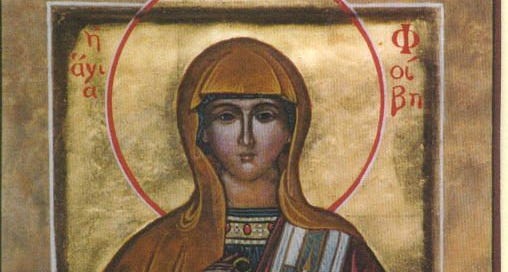IN THIS ARTICLE: In Romans, Paul sketches a portrait of a woman given one of the most significant theological tasks in the church's history. Who was she, what kind of titles and responsibilities did she carry, and what does that say about the capability and scope of women in ministry today? Let’s find out.
I say this with respect, ladies. When a woman gets out of the kitchen, she's out of her place. That's right. That's where she belongs. Outside of that, she has no place. And now, I'm not hard on them, but I just tell what's the Truth and what the Bible [says]. - Spiritual abuser William Branham1
I commend to you our sister Phoebe, a deacon of the church in Cenchreae. I ask you to receive her in the Lord in a way worthy of his people and to give her any help she may need from you, for she has been the benefactor of many people, including me. — Apostle Paul, Romans 16:1-2)
Ever heard of Phoebe? What relevance might she have for discussing contemporary women's roles in the church? Let’s find out. Phoebe is from Cenchreae, the harbor on the eastern side of Corinth. Paul calls Phoebe “our sister,” establishing his affection and identifying her with God’s family. Nijay Gupta takes it further: “Paul could refer to any fellow Christian as ‘brother’ or ‘sister.’ But this language takes on more of a technical meaning in commendation passages, where he would be recognizing their peer status — this person is just like me.”2
Then Paul calls Phoebe a διάκονος (diakonos), translated as “deacon” in the NIV above. Many scholars agree it was too early in church history for diakonos to describe an officially ordained office with similarly prescribed roles from church to church. In its first century and especially its original Christian context, the term referred to the authorized agent of a person, a church, or God.3 “Diakonos” is one of Paul’s favorite descriptions of church leaders and is often translated as “minister”:
Paul refers to Apollos, Epaphras, and Tychicus as “diakonos”
(1 Cor. 3:5, Eph 6:21, and Col. 1:7).Paul even names himself a diakonos in four of his letters
(1 Cor. 3:5; 2 Cor. 3:6; Eph. 3:7; and Col. 1:23).Then he calls Timothy, the one who is to appoint elders and correct false teachers in Ephesus, a diakonos (1 Timothy 4:6).
He also describes Jesus Christ as a diakonos in Romans 15:8, just one chapter before describing Phoebe as a diakonos.
So, diakonos Phoebe is in strong company. Frederick Dale Bruner reminds us that the late Robert Jewett affirmed contemporary consensus scholarship, writing, “Although earlier commentaries interpret the term diakonos as a subordinate role, it now appears more likely that she functioned as the leader of the congregation.”4 We can’t know that Phoebe led the whole congregation just from the word “diakonos,” but it’s even more certain that we can’t restrict her role to what deacons do at many modern churches.
While deacon boards lead some churches, it’s probably more common to see contemporary deacons as those involved in ministries of mercy and benevolence or to what we’d call “table waiting,” based on the group of seven men called to ensure that Greek-speaking Jewish widows received food in Acts 6 (which does not describe these seven as deacons). We cannot read a contemporary understanding of deacons back into the New Testament understanding of “diakonos” (again, a term Paul used of himself and Jesus).
But Paul also calls her a benefactor and tells the Romans, “Give her any help she may need from you.” The word that the NIV translates as “benefactor,” προστάτις (prostatis), is the feminine form of prostates, which carries a semantic range that includes “leader,” “chief,” “president or presiding officer,” “ruler,” “guardian,” “champion,” “one who stands before and protects,” and “patron,” according to the Liddell, Scott, Jones Greek lexicon.5
Philip Payne finds,
Every meaning of every word in the NT related to the word Paul has chosen to describe Phoebe as a ‘leader’ (prostatis) that could apply in Rom 16:2 refers to leadership. This includes the usage shortly before in Rom 12:8, ‘The one in leadership (ho proistamenos), let him govern diligently.’ G.H.R. Horsley identifies citations of prostates, including O. Tebt., Pad. 67, and I. Eph. III.668a, that identify the president of an association …. Even Charles Ryrie … acknowledges that prostatis ‘includes some kind of leadership’ …. the linguistic evidence and the context of Phoebe’s standing in the church strongly favor the normal meaning of the term, prostatis, namely, “leader.”6
Leanne M. Dzubinski and Anneke H. Stasson add:
the word used in verse 2 for Phoebe is used only this one time in the New Testament. It’s a feminine noun form, and the masculine form isn’t used in the New Testament either. What is used several times is the verb form of the same word, and it’s often translated ‘to manage,’ ‘to rule,’ or even ‘to lead’
Romans 12:8, 1 Thessalonians 5:12, and 1 Timothy 5:17 are about church leadership, so they are the closest to what Paul is talking about with Phoebe. In all three of these verses, every translation [the above plus NKJV, NASB, NRSV] uses a word that clearly implies authority over and responsibility for people.
Truly, the best way to understand Phoebe based on Paul’s language in Romans 16:1-2 is that she was a recognized leader of the church in Cenchreae with a role that included authority and responsibility.7
Perhaps even more importantly, Paul begins talking about Phoebe by saying, “I commend to you our sister Phoebe …” When writers in the ancient Roman empire concluded a letter with a commendation for a person, that person was the courier of the letter. They “brought the mail” and read it aloud to the audience.
Nearly all Bible scholars agree that Phoebe brought this epistle to the various house churches in Rome (at least five) and read it to each of them.8 9 Early manuscripts of Romans include short texts at the end of the letter called subscriptio, written by scribes to include information about the letter. Some of these manuscripts say that the letter was sent “from Corinth” and “through Phoebe the deacon,” while others say it was written “through Tertius” (the scribe, Romans 16:22) and “sent through Phoebe” (later church leaders like Peter Abelard and John Calvin believe this, too).10
Why is this important? Paul had to know that the Roman Christians might have questions about his epistle, perhaps the New Testament's most technical, complex book. Who would he have anticipated would be asked questions about it? The person who brought the letter and received a strong commendation from Paul himself. Michael Gorman writes, “It is likely that Paul is expecting Phoebe to interpret Romans — the longest and most important letter he ever wrote — to the church(es) in Rome as they have it read.”11
If you print this very Substack article, carry it to a meeting of five or six friends, and read it aloud to them, what are the chances that you’ll be asked some questions or invited to comment about it? I’m guessing the chances are high — especially if I wrote a strong commendation for you at the end of my article.
Therefore, it's likely that the first person ever to explain any part of Romans to a Christian church was Phoebe. Beverly Gaventa points out that she would have been engaged in interpretation even before the first church member asked a question:
To read is to interpret …. Almost inevitably, Phoebe shaped the hearing of the letter by the way she read it, whether she rushed through some passages, lingered over others, paused to allow the words to sink in, or stopped to add an explanatory note at various points. Phoebe had a role in interpreting the letter. She and Paul may even have talked about what sort of delivery he wanted, but when the time came and especially as questions arose, she was on her own.12
Is this kind of thing too heavy a weight to put on a Christian woman’s shoulders? Scot McKnight clarifies the weight:
Ever read Romans aloud? In front of people? In front of people who could ask questions? Even questions about Romans 7 and 9-11?!13
So again, is this kind of thing too heavy a weight to put on a Christian woman’s shoulders? Well, it wasn’t too heavy for Phoebe. It’s not too heavy for the Phoebes in my life.
How about the ones in yours?
William Branham, 56-0513 - Teaching On Moses, para. 22, Accessed March 21, 2025. https://en.believethesign.com/index.php/The_Misogyny_of_William_Branham#cite_note-25
Nijay Gupta, Tell Her Story: How Women Led, Taught, and Ministered in the Early Church (Downers Grove: IVP, 2023), 123.
John N. Collins, Diakonia: Re-Interpreting the Ancient Sources, 1st edition (New York: Oxford University Press, 2009).
Frederick Dale Bruner, The Letter to the Romans: a Short Commentary (Grand Rapids: Eerdman’s, 2021), 190.
LSJ, s.v. “προστάτης”
Philip Payne, Man and Woman: One in Christ: An Exegetical Study of Paul’s Letters (Grand Rapids: Zondervan Academic, 2009), 62-63.
Leanne M. Dzubinski and Anneke H. Stasson, Women in the Mission of the Church, (Grand Rapids: Baker Academic, 2021), 48–50. (I simplified their table of verses to include only the NIV and ESV, but their other listed translations (NKJV, NASB, NRSV) change nothing).
Beverly Roberts Gaventa, When in Romans: An Invitation to Linger with the Gospel according to Paul (Grand Rapids: Baker Academic, 2016), 10-13.
Timothy Paul Jones, Apologetics: How the New Testament Epistles Were Written, Accessed March 21, 2025. timothypauljones.com/new-testament-epistles-were-written/
Gupta, Tell Her Story, 121.
Michael J. Gorman, Romans: A Theological & Pastoral Commentary (Grand Rapids: Eerdmans, 2022), 295.
Gaventa, When in Romans, 14.
Scot McKnight, Romans (New Testament Everyday Bible Study) (Grand Rapids: HarperChristian Resources, 2023), 25.







I showed my 3 year old daughter (Phoebe) what I was reading this morning. Thanks for writing this!
How do I send this to my former church without sending this to my former church